(3/05)
Donna had read some brief comments from William Hunt, who said that he had used perlite as a grog to make clay bodies that were very resistant to thermal shock, and could be fired in minutes rather than hours. That appealed to her desire to fire pots at home, and to my impatience.
So, I built a new forge with a bit more space inside, and we set out to have a go.
Donna hand-built pots from a mixture of equal parts of perlite and white stoneware clay.
They were left to dry overnight, then microwaved on keep-warm for 90 minutes or so. Fiddling with the microwave power to give a surface temperature of about 50C seemed to work well (we had one spall at a surface temperature of around 80C). We tried putting one piece from the microwave into a warm kiln, but it spalled into bits. So the rest of them went into a cold oven, which warmed up to 250C or so over 15 minutes. That gave them a bit more drying and a good preheat.
We bisque-fired them in the forge to a cheery orange, which took about 10 minutes:
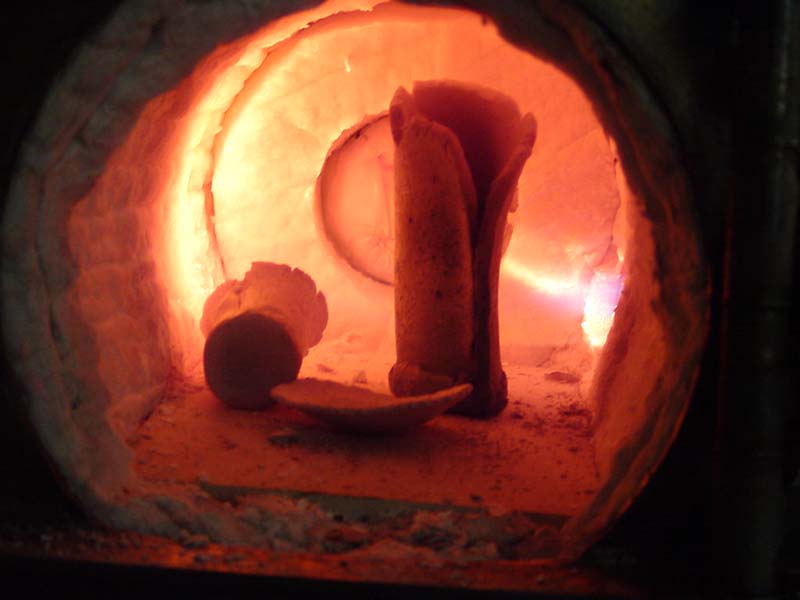
Glazed them in the kitchen with brush-on raku glazes:
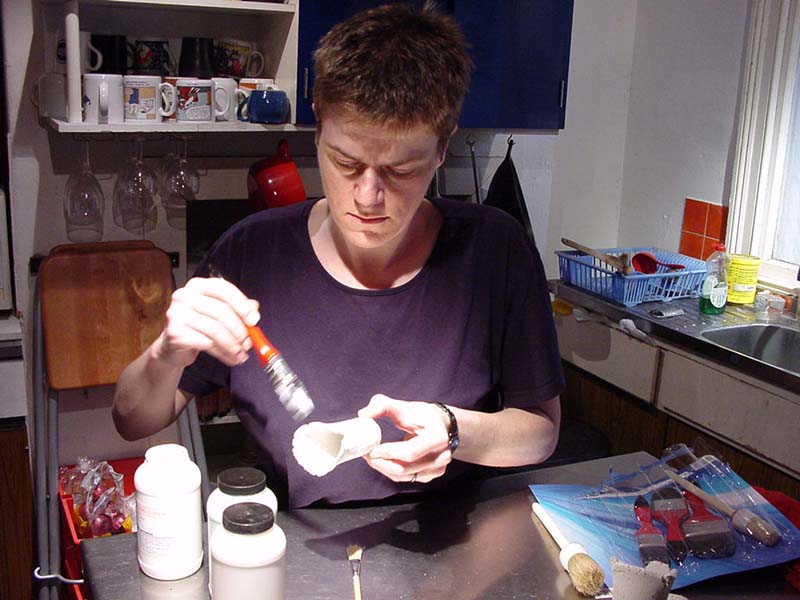
Dried and pre-warmed them in the oven (250C, 15 minutes)
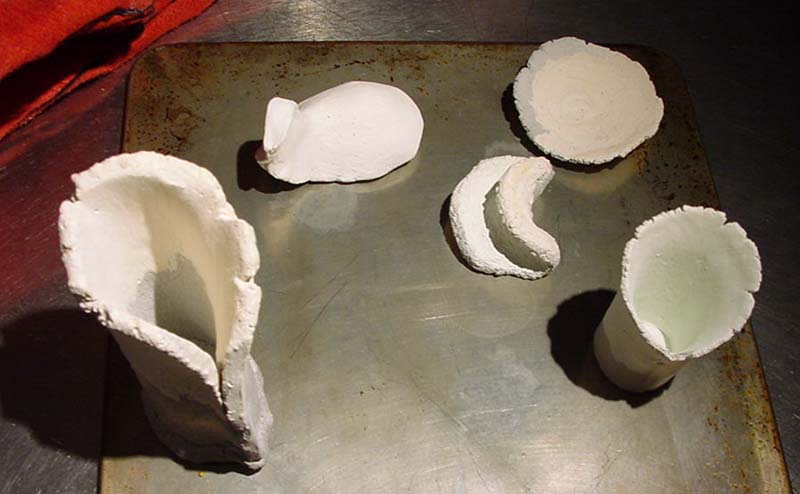
Then fired them in the kiln, waiting for the glaze to go glossy (again, about 10 minutes), took them out, and buried them in sawdust. Specifically, in the planings from Dingbat's Norse chest.
After 10 minutes, they come out of the sawdust
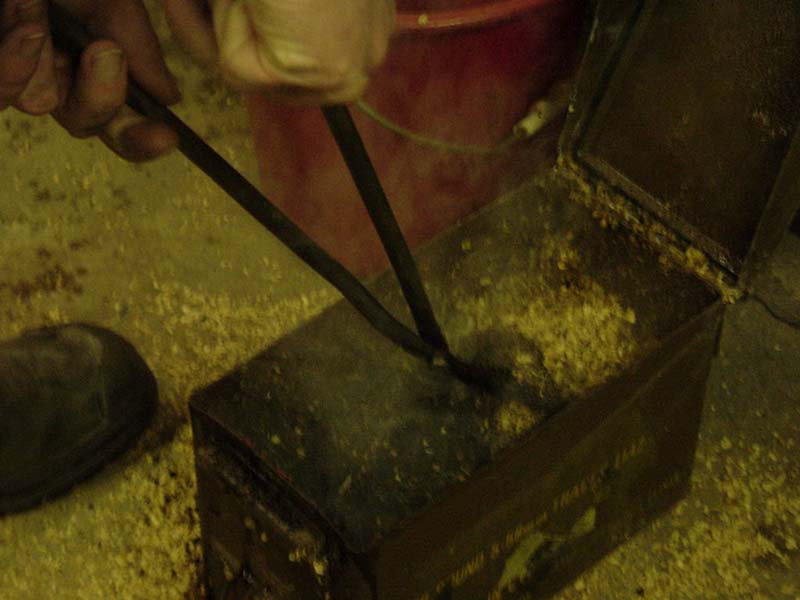
Looking very crusty and unappealing:
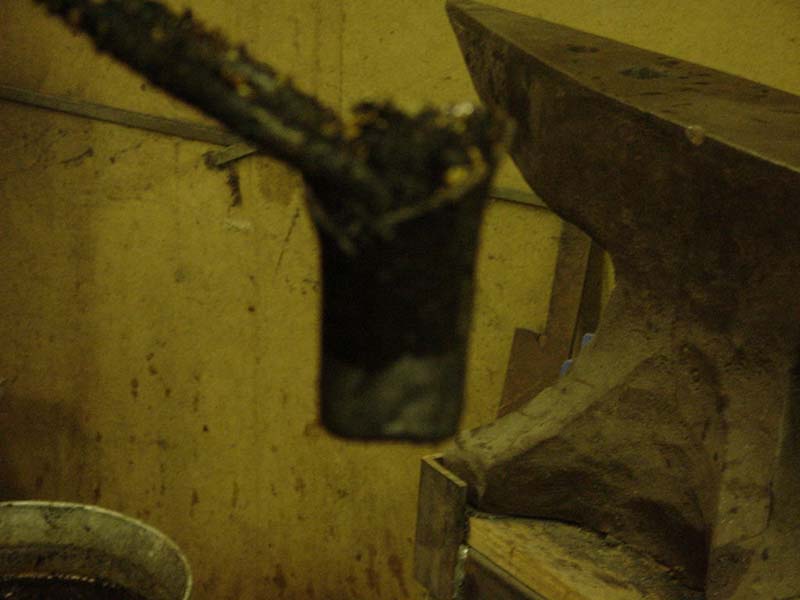
And into a bucket of water:
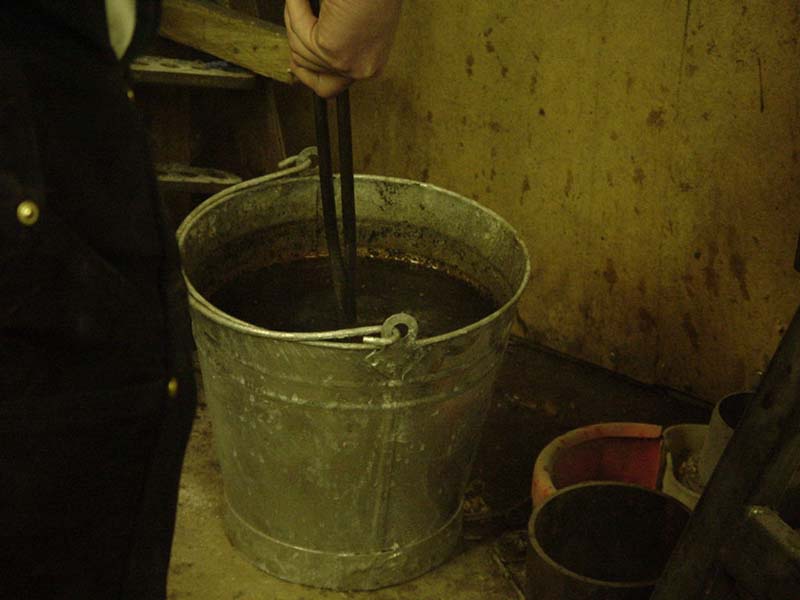
Once they've cooled, a quick scrub reveals what worked & what didn't:
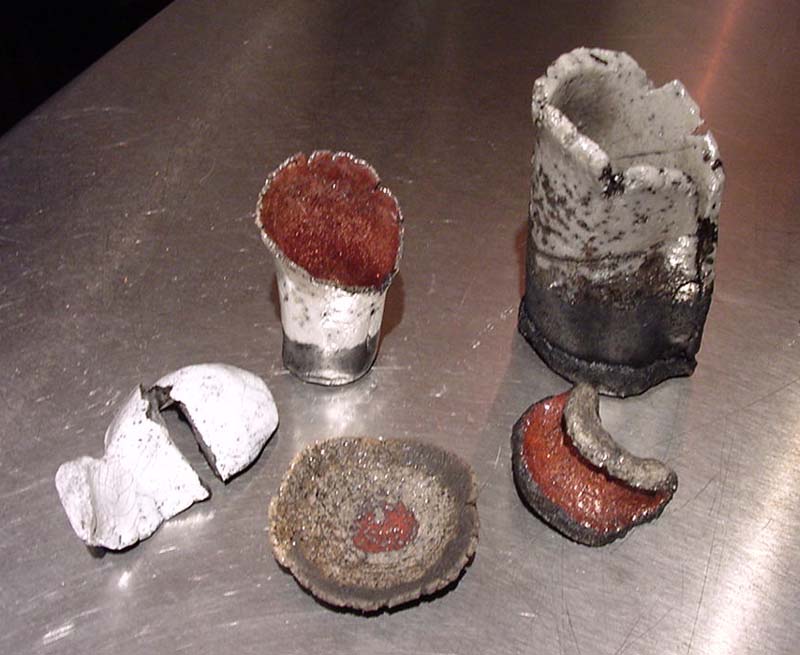
This one got a fine crackle on the outside, and a reduced metallic copper on the inside:
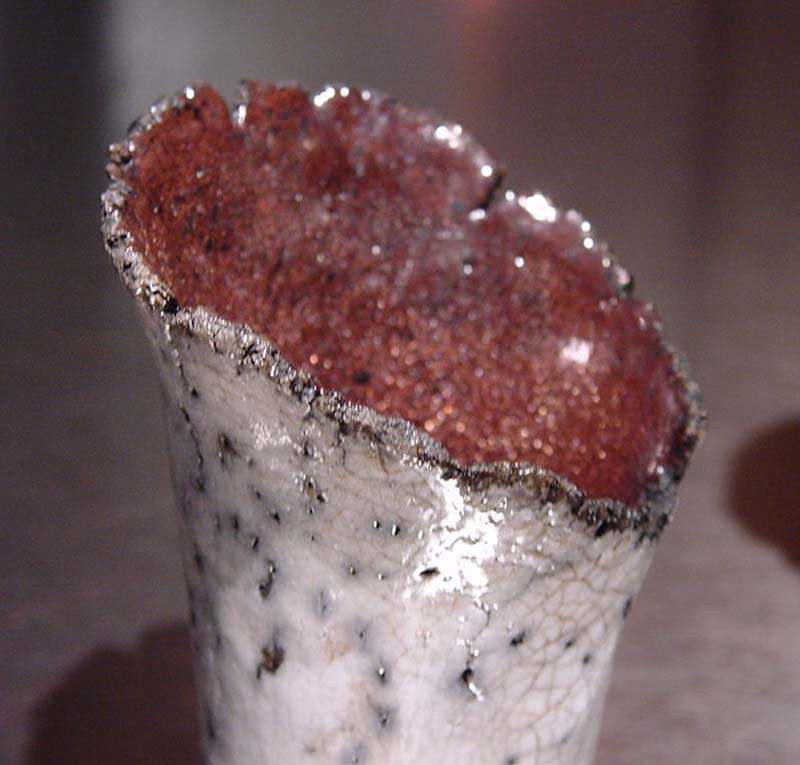
But Duckboy here hadn't been able to tolerate the thermal shock, and had rather gone to pieces. I think his left flank hadn't got hot enough to smooth the glaze out, too.
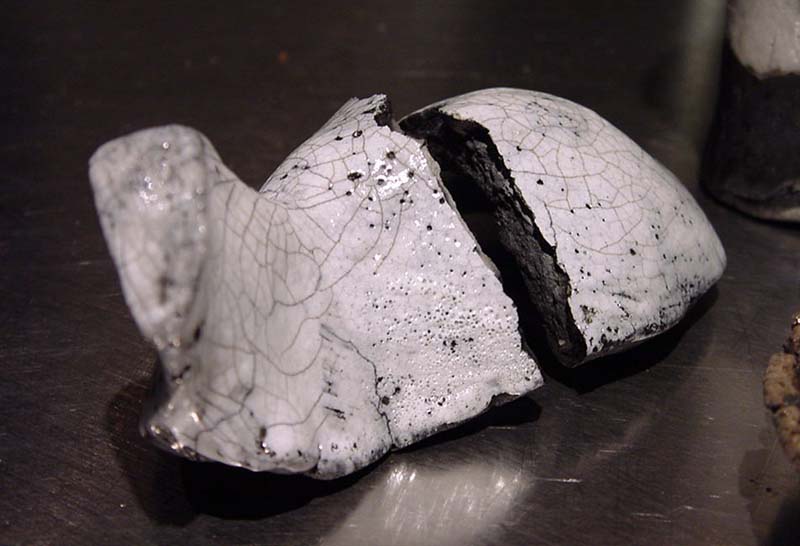
 Home | Artefacts| Forgework
Home | Artefacts| Forgework